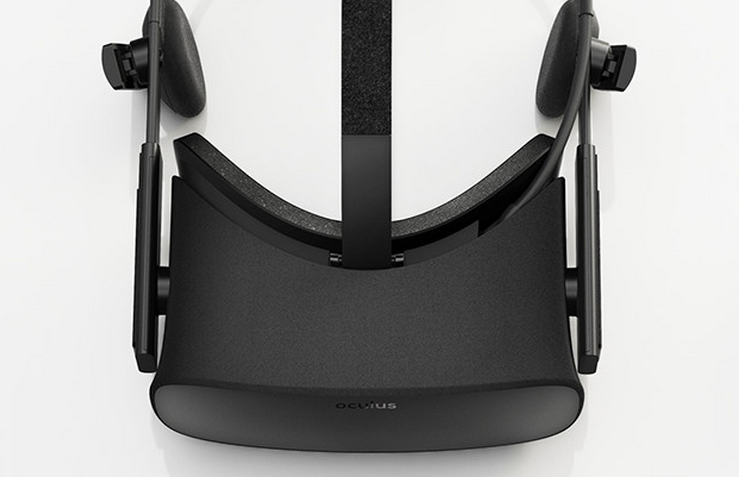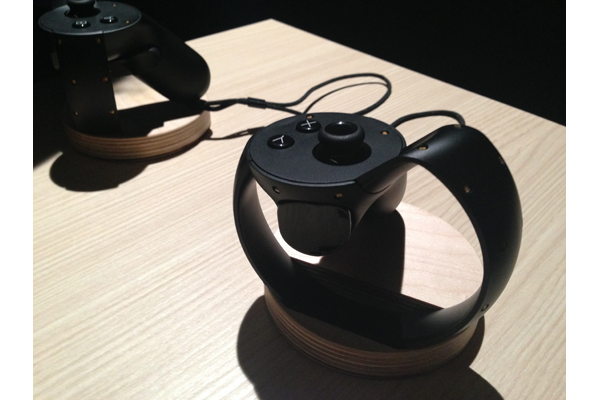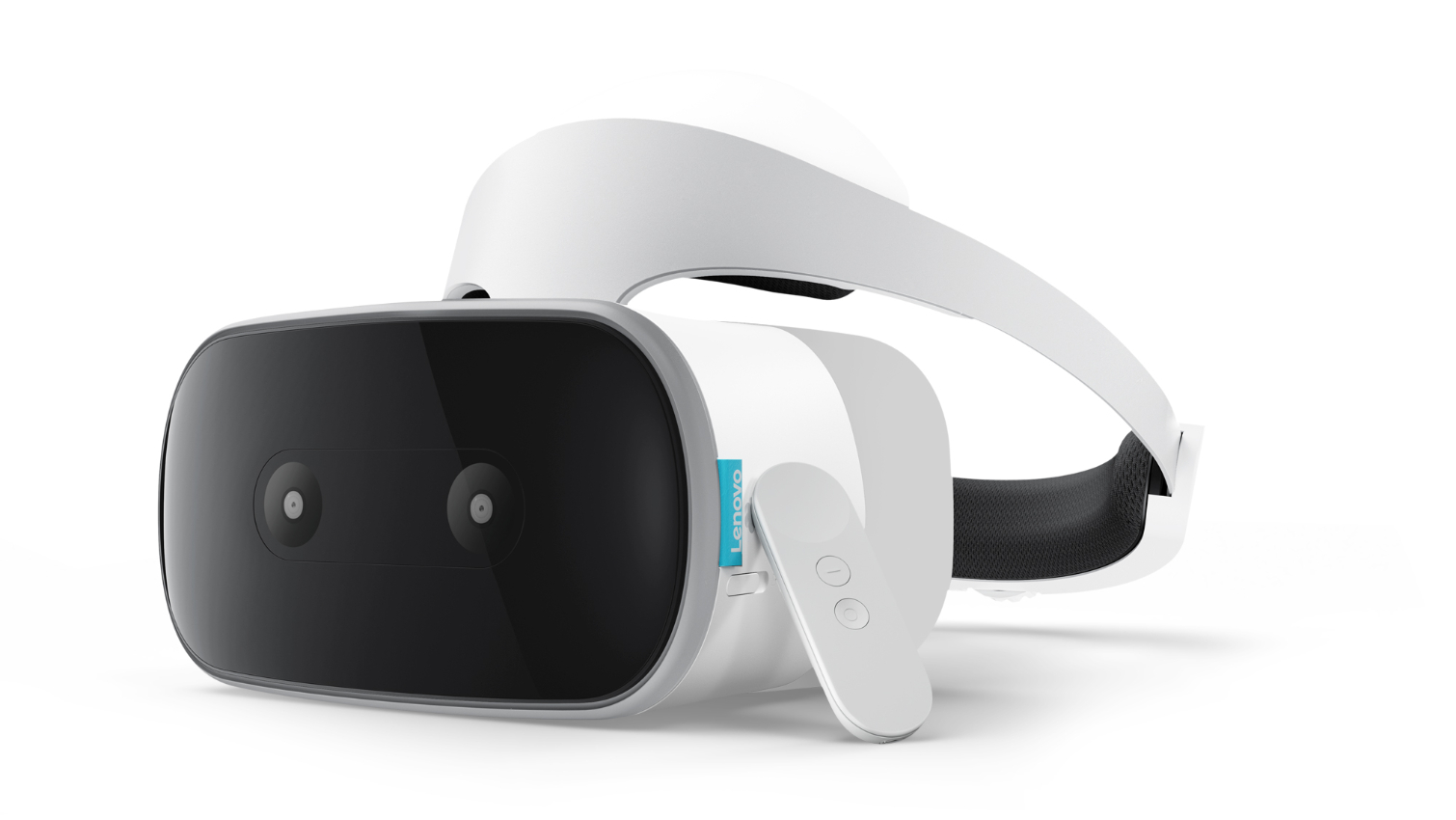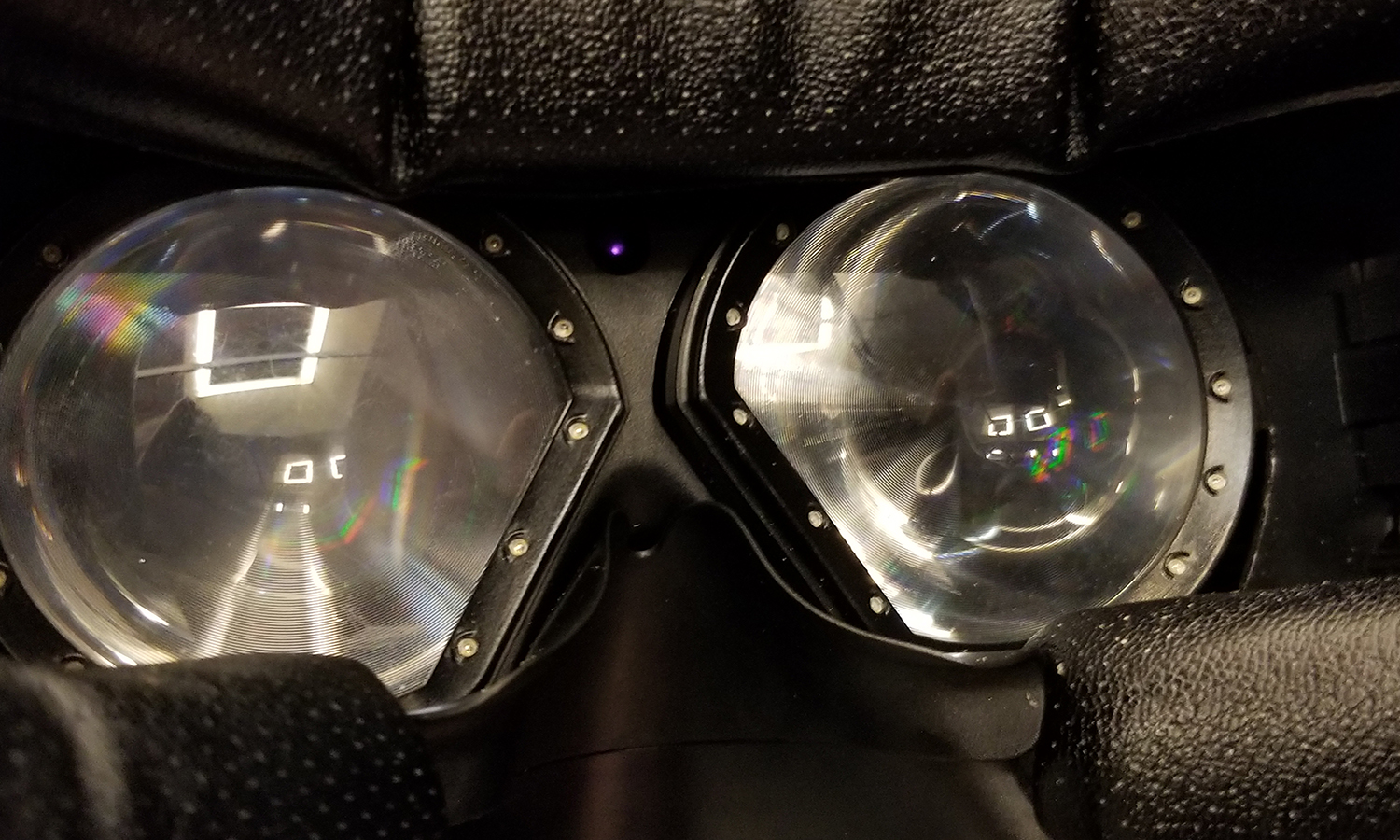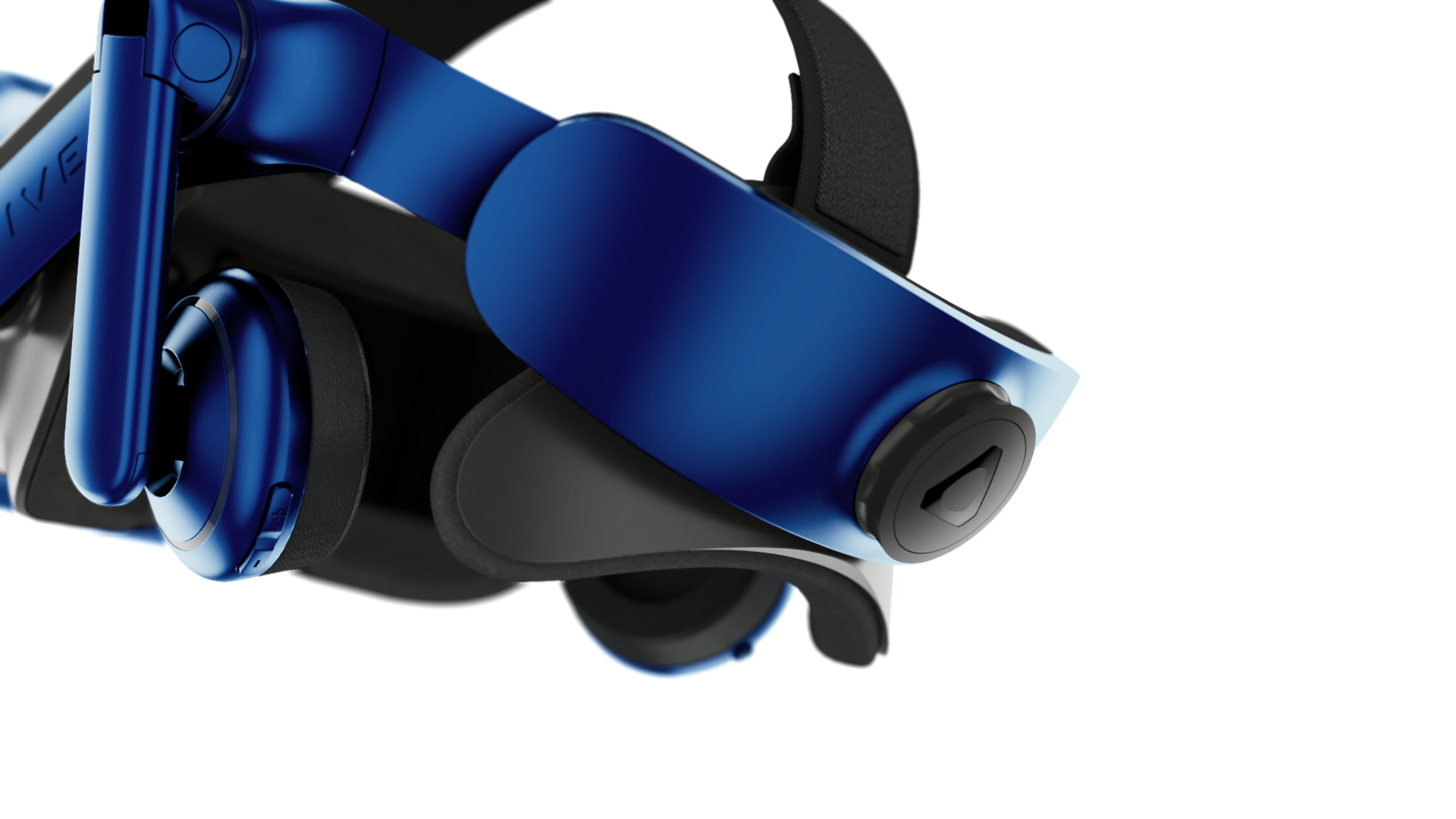Tom's Soapbox: Happy Birthday, VR! Now Grow Up
This week marks the two-year anniversary of consumer VR. It’s a little hard to believe that Oculus first released the Rift VR headset that long ago.
I remember the hype leading up to the launch. For months, Oculus teased that the Rift was just over the horizon, but never quite revealed exactly when it would appear. And then during the CES 2016 trade show, Oculus suddenly announced the price, revealed the release date, and opened pre-orders. And the announcement caused a flurry of, um, virtual excitement.
The news also deflated some people's expectations: They weren’t prepared for the sticker shock of a $599 price tag. When HTC announced the $799 price of the HTC Vive a month later, the general reaction was similar. VR headsets were too much money, and no one would ever buy one at those prices, shoppers decried.
Isn’t it funny how some things never change?
Two years ago, people were up in arms over the price of the new VR headsets. This year, people are losing their minds over the just-announced price of HTC’s fancy new Vive Pro. Though a vocal minority is still crying foul about the price of VR, the reality is that things have changed quite a bit for consumer VR in two years. Not just regarding price, but regarding pretty much everything.
Today’s consumer-grade VR is on an entirely new landscape compared to two years ago. Allow me to give you a brief rundown of what I mean.
The Faces Of VR Have Changed
If it weren’t for a young Palmer Luckey tinkering in his garage to create the first Oculus Rift prototype, the consumer VR market might not have materialized. However, these days, the father of modern VR isn’t really in the picture.
Get Tom's Hardware's best news and in-depth reviews, straight to your inbox.
Last year, Luckey left the company he founded following a controversy involving his political views. He’s still in the VR industry, with a new company that’s developing military-grade VR components. But he no longer has any affiliation with the Facebook-owned VR company.
Luckey isn’t the only face of Oculus no longer in the viewfinder. Though he’s still part of the company, Brendan Iribe stepped down from the position of CEO after he was personally held liable for damages in the Zenimax vs. Oculus infringement lawsuit. It’s unclear whether Iribe stepped out of his own accord, or if Facebook management had anything to do with it. Either way, the people who brought Oculus into the limelight are no longer steering the Oculus ship. Whether that’s a good thing or a bad thing remains to be seen.
Oculus isn’t the only VR company that lost a public face. Last year, Chet Faliszek, Valve’s most vocal VR evangelist, left the company to pursue new things. Faliszek did a lot to build awareness for the Steam VR platform, and to attract developers to it. If it weren’t for him, Valve’s position in the VR market would likely be much less prominent.
Since Faliszek left, Valve has been much less forthcoming with information about the platform and what’s coming down the pipeline, though it did release details about Steam VR Tracking 2.0 last year. So much for Steam.
New Hardware Innovations
Speaking of things coming down the pipeline: HTC continues to bring out new upgrades for the Vive platform on a regular basis. Throughout the first year of the Vive’s existence, the company quietly revised the device, improving upon minor details. For example, the first headsets had a fabric hinge for the overhead head strap, whereas the newest headsets have a plastic hinge that adds a little bit of rigidity to the mechanism. The new device also features a thin cable, instead of the three-wire cable that shipped with the early Vive units.
Last year, HTC released the Deluxe Audio Head Strap, which vastly improves the comfort of the HMD. In my opinion, HTC should have made the new strap a standard, though. Fortunately, it wised up for the Vive Pro design, which tells me the days of fabric VR head straps are numbered, if not behind us. Rigid straps are in, and for good reason.
HTC also released the Vive Trackers, which sounded great on paper. But when the devices hit the market, they fell short of the mark. HTC said that hundreds of developers lined up to get a hold of a set of Vive Trackers, but to date, only a handful of titles actually benefit from HTC’s universal tracking devices. I have to say: I’m disappointed with the lack of peripheral support for the Vive Trackers. I expected a half-dozen or so rifle peripherals (and the like) by now. HTC doesn’t seem to be giving up on the Vive Trackers, though, so maybe we’ll see promising hardware soon.
Costs Are Going Down
When consumer-grade virtual reality hit the market, the biggest hurdle preventing most people from purchasing a headset was the cost of entry. The price of the head-mounted displays was high, but you also needed a high-end graphics card to push it, which exacerbated the costs.
These days, the price is still high, but the cost is shifting toward the graphics card and away from the HMD part of the equation. The current state of the graphics card market, which is under pressure because of such heavy demand from cryptocurrency miners, is keeping the overall cost of high-end VR so high. But VR headsets themselves are much cheaper than they were two years ago.
In the last year, Oculus slashed the price of the Rift with Touch controllers in half, and HTC reduced the Vive’s price from $799 to $499 in the same period. The new competition from Microsoft’s Windows Mixed Reality hardware partners is helping to drive the price of VR down even further. These new devices include inside-out tracking sensors and offer higher-resolution displays than the Rift and Vive, yet most of them cost less than the Rift headset. And just as I wrote this, Sony permanently knocked $100 off the price of the PSVR.
Motion Controllers Aren’t Optional Anymore
When Oculus began shipping the first Rift VR headsets to eager customers and officially kicked off the era of consumer-grade VR, the company targeted seated VR experiences. Why? Because it believed that traditional gamers would be the first people to adopt virtual reality hardware, and it didn’t want to stray too far into unfamiliar territory.
The original Rift bundle included an Xbox One gamepad, and the games that shipped in the first six months were designed to work with traditional input methods. However, Oculus’ assumption that gamepads would help transition people into VR turned out to be a poor bet.
VR games with gamepad inputs lack a certain level of immersion, which wouldn’t have been a problem, save for the fact that HTC introduced the Vive, with its room-scale tracking and wand controllers, a week after Oculus released the Rift. The higher level of immersion that the Vive offered quickly won the approval of critics.
Oculus eventually conceded that the fully immersive room-scale experience with motion controllers makes for superior VR. These days, 94% of Rift owners also have a pair of Touch controllers, and Oculus supports three-sensor tracking setups to enable room-scale tracking.
Getting Less Cumbersome
Two years ago, when VR was a brand new and exciting thing, it was easy to dismiss the cumbersome setup of VR systems as just "one of those things" that early adopters must deal with. But two years into this market, newcomers aren’t quite as receptive to complicated setup processes that require running cables across your room.
Microsoft is now trying to capitalize on that market with its simple-to-set-up Windows Mixed Reality platform. But things are about to get a whole lot simpler. "Standalone VR" is going to be a form-factor game-changer.
Several companies are bringing standalone headsets to the market this year, including Oculus with the budget-friendly $200 Oculus Go headset, Lenovo with its $400 Mirage Solo Daydream headset, and HTC with the likely $600-plus Vive Focus headset. These devices will make it much easier for most people to adopt VR, by eliminating the extra burden of owning a host computer to power the device.
The first generation of standalone VR headsets won’t compare to today’s tethered VR systems. But I think, ultimately, both worlds will converge into a single path. (Oculus’ Santa Cruz prototype is a good example of that already happening.)
Qualcomm: Taking VR By Storm?
It will be some time before standalone headsets compete on a level with PC-connected headsets. But that day will come--and Qualcomm will probably have something to do with that.
Two years ago, Qualcomm already had its foot in the VR market. The company’s Snapdragon SoC has long been the foundation of Samsung’s Galaxy smartphone line, which put it at the forefront of premium mobile VR even before Oculus brought the Rift to market. These days, it’s not just a foot that Qualcomm has in the VR industry. The company all but shoved its whole body through that door. Last year, the company set up a headset reference-design platform, of which all three standalone HMDs mentioned above are products.
Qualcomm is also working with Tobii to help bring eye-tracking technology to standalone VR headsets, which will be another huge milestone for VR. Eye-tracking technology will open the doors to "foveated rendering" technology, which would reduce the workload that GPUs must grind through to power the VR experience. Foveated rendering uses eye-tracking systems to pinpoint where your pupil is focusing and directs the GPU to render that zone at a higher fidelity than the area in your peripheral vision.
Two years ago, it seemed like eye-tracking was a distant concept, but today, we’re really close to it being a standard part of the industry. Tobii isn’t just working to bring its eye-tracking technology to mobile VR. The company has already demonstrated its technology working in an HTC Vive, and I would be shocked if HTC’s next HMD doesn’t have Tobii eye-tracking sensors built into it.
Tobii isn’t the only company making eye-tracking tech, but it seems to be the only one still working with third parties. Fove makes eye-tracking tech, but it keeps its technology in-house, and the company hasn’t had much to say regarding hardware development for more than a year. SMI was arguably further along in the eye-tracking game, but Apple snatched it up last year. So we likely won’t see SMI’s eye-tracking systems materialize until Apple has an HMD to show off.
Apple doesn’t seem interested in virtual reality, but it snapped up Vrvanna last year and acquired the technology that went into the Totem mixed-reality headset. I tried the Totem about a year and a half ago, and to this day, it’s the most impressive, immersive tech demo that I’ve yet seen. I really hope Apple brings something along those lines to the consumer market in the next year or two.
So, What’s Next?
The first two years of consumer VR were exciting, with many innovations emerging from the shadows. However, the industry is nowhere near done innovating yet. It’s just getting its feet wet, and there’s much yet to come.
Later this year, Pimax’s Pimax 8K headset will bring an ultrawide VR headset to the market, and many people are praising the upcoming HMD as a next-generation VR device. However, sheer screen resolution isn’t everything. If the headset is uncomfortable, it won’t do well in the market. I have high hopes for the Pimax 8K, especially after trying the Pimax prototype last fall, but I don’t think it’s going to meet the criteria that would put it in on equal footing with competitors.
Nearer-term--namely, next week--HTC will begin shipping the Vive Pro HMD, which many consider a "generation 1.5" HMD. The new device includes a high-resolution display, which improves the visuals, but I’m honestly more excited about the improved comfort of the Vive Pro. HTC put a lot of work into refining the headset to maximize comfort for all-day use, and if it’s an indication of where the industry is going, I’m excited to see the true second-generation headsets come around in the next year or two. Today’s VR HMDs are fine to wear for an hour or so, but if this medium is really going to take off, we need devices that are comfortable for hours of continuous use.
At this point, I don’t think it’s a matter of if. It simply comes down to when. The industry has shown that consumer VR has a place in the market, but it’ll be a slow progression that stretches out over the next few years. The first two years of VR were exciting, but I can’t wait to see what’s coming around the corner. The next two years should be just as exciting as the previous two.
Kevin Carbotte is a contributing writer for Tom's Hardware who primarily covers VR and AR hardware. He has been writing for us for more than four years.
-
bit_user Reply
Not a technical level. Desktop GPUs will always be an order of magnitude faster than mobile. For this reason alone, desktop VR will remain a premium platform, where users will find the best visuals as well as other benefits from integration with the PC ecosystem.20839632 said:It will be some time before standalone headsets compete on a level with PC-connected headsets. But that day will come
That said, I'm very excited about standalone VR. I think the two can co-exist, not unlike smart phones and laptops. -
gdmaclew When VR gets to the point where wearing a headset doesn't make me look like I'm someone out of a bad 1950's sci fi movie I'll buy it.Reply
-
bit_user Reply
Why do you care? Don't you have anywhere private that you can use it?20841247 said:When VR gets to the point where wearing a headset doesn't make me look like I'm someone out of a bad 1950's sci fi movie I'll buy it. -
twoworlds.craigslist 'This week marks the two-year anniversary of consumer VR.'Reply
Technically, this is the 31st anniversary of consumer VR because Nintendo did it with the Famicom 3D System...! -
middaria (I honestly do not understand the VR hype.)Reply
"Unfortunately, no one can simply be told what the matrix is, you have to see it for yourself."
-Morpheus -
bit_user Reply
https://en.wikipedia.org/wiki/Famicom_3D_System20843220 said:'This week marks the two-year anniversary of consumer VR.'
Technically, this is the 31st anniversary of consumer VR because Nintendo did it with the Famicom 3D System...!
That is not VR in any meaningful sense of the word. The lack of head tracking means even Virtual Boy can't properly be considered VR.
https://en.wikipedia.org/wiki/Virtual_Boy
BTW, I actually tried it. Not VR.
The article should've said something about "modern consumer VR" or the current wave of VR hardware, to sidestep this sort of nit-picking. -
gergguy (I honestly do not understand the VR hype.)Reply
Because you haven't tried it. It can not be understood until you experience VR (not cardboard, I'm talking one of the big three - PSVR, Vive , or Rift).
